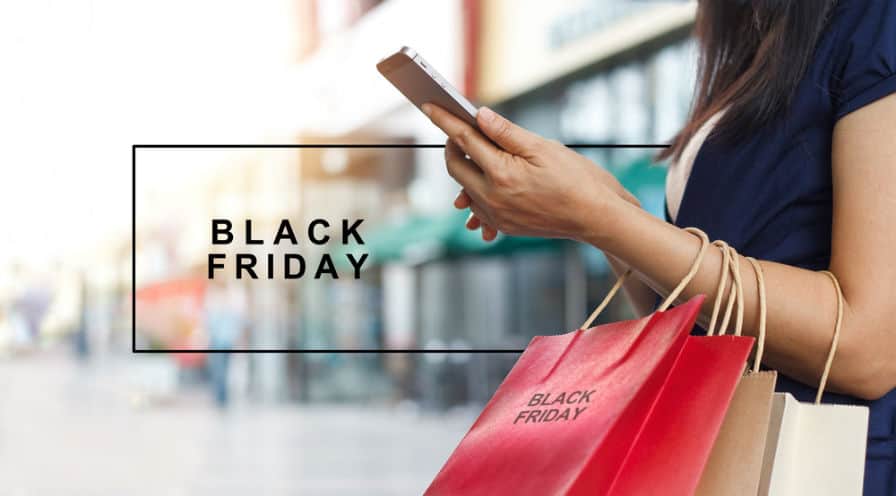Retailers across the globe are gearing up for Black Friday, which is taking place at the end of this week on November 23. The global retail event is renowned for slashing costs on everything from electronic devices and clothes to furniture and software packages.
With just five days to go until one of the biggest sales days of the year, PerformanceIN looks into some of the key areas and trends in the run-up to the shopping event, including predictions, stats, and industry movements.
Mid-market migration
New research by Bazaarvoice has revealed that 61% of consumers who are now looking to buy Christmas gifts from brands like Burberry and Omega are looking to buy them at a discount on Black Friday. While discount shoppers remain steadfast in their choice of the best prices, the UK, French and German mid-market shoppers still centre their buying decisions on the quality of products (60%).
Importantly, the mid-market should never look to compete through price. While over two-thirds of the luxury market express positive sentiment towards brands that offer discounts around days like Black Friday, this drops to just 54% among mid-market shoppers who are among the most likely to react negatively and not buy from the brand again.
Splashing out online
Research from Salmon, a Wunderman Commerce company, suggests that UK consumers will spend nearly £5 billion this Black Friday, with almost half expected to be spent online. The research, which surveyed 2,000 consumers in the UK, showed consumers will spend on average £90 on Black Friday, with the 25-34 age range splashing more cash than anyone else (£154).
According to the research, consumers are set to spend 16% of their total Christmas spend on Black Friday but young people will be the biggest bargain hunters ahead of the festive season, with this figure rising to 28% for 16-24-year olds.
“Black Friday is now a highlight in many consumers’ calendars – but in an increasingly online and competitive retail world, it’s not only the deal that gets consumers through the door – it’s the experience and service they receive throughout the entire sales process. Brands, retailers, and marketplaces have to be as smart and agile as the consumers they’re selling to,” said James Webster, head of managed services and peak trading expert at Salmon.
Social shopping set to spur on shoppers
Today, 42% of global internet users predominantly conduct research about brands, products, and services through social networks, putting them just 10-percentage points behind search engines. A study conducted by GlobalWebIndex of 3,500 consumers in the UK and US found that 49% of UK and 53% of US consumers are now converting through social platforms. The most popular platform is Facebook, through which 39% of UK respondents stated they have made a purchase.
One of the most popular platforms for purchasing after seeing a Black Friday or Cyber Monday advert is Instagram. A quarter of UK respondents identify a better preview of the product as a core reason for their choice of platform to buy through. This rises to 31% in the US. A richer experience is also delivered through users’ ability to see the latest trends and influencer posts through a social network (20%) and the fact they can see what friends have engaged with or purchased (20%).
Video is key to e-commerce conversions
E-commerce conversion rates could be boosted by as much as 85% through effective use of video, according to new research from Viddyoze. Video has become a vital conversion tool for e-commerce businesses in the absence of physical products as more stores adopt a “digital-first” retail offering. This sentiment is echoed by consumers, with 44% claiming that they would purchase more products from an e-commerce website that features product videos.
“In the digital business landscape, and retail in particular, if a business is not using video effectively, they’re losing money, and we believe that no business should be excluded from offering this service during a period in which conversions and sales are so crucial,” said David Chamberlain, co-founder of Viddyoze.
Moving beyond discounted tech products
Research by Rakuten Marketing discovered that globally, technology remains a staple part of gift shopping. On a global level, the types of gifts consumers are most looking to receive this holiday season are home electrical and technology gifts (28%).
The UK, however, is one of the first countries to break away from this trend. Locally, cosmetics (16%), fashion (25%) and travel (17%) are what consumers most want to receive as gifts as opposed to electrical and technology gifts.
“This shows the importance of targeting your shoppers in line with local nuances vs. a one-size-fits-all approach. Consumer behaviour does not fit one mould,” commented Anthony Capano, managing director of Europe at Rakuten Marketing.
In another research report, Rakuten Marketing found that experience days (31%) and travel (18%) are two sectors gaining far more traction among UK gift shoppers than US counterparts.
Affiliate predictions
Some brands have struggled to grapple with the surge in demand events like Black Friday present, including how to balance the increase in returns with maintaining decent levels of customer service and the inexorable rise of e-commerce and the margin hit from discounting. Dragging deals, promotions and offers ever earlier in advance of Black Friday, Awin is seeing retailer ‘creep’ as November morphs into a 30-day discounting splurge. Download Awin’s report, titled ‘The Golden Quarter: Affiliate Predictions 2018’.
Research from the Brazilian e-commerce specialist e-Bit in 2016, found that Black Friday was potentially a perfect opportunity to attract new customers. According to their insights, the big day directly impacted the growth of online shoppers in the country by up to 17%, with an extra 280,000 shoppers making their very first online purchase during the 24-hour Black Friday period.
A combination of assessing new customers and their subsequent purchase behaviour should be a central part of evaluating affiliate performance around peak times like Black Friday. Awin has released a whitepaper revealing some useful insights that brands can leverage for success. Access the whitepaper here.
Amazon.co.uk is set for biggest sale
Amazon.co.uk has long been regarded as the spiritual home of Black Friday. It’s therefore pretty big news when they announced that this year’s sale will be their biggest ever, with 10 days of deals and more great offers than ever before, apparently. Amazon’s ultra-fast delivery service, Prime Now, will also offer special Black Friday deals to more than 30% of the UK population, providing an ideal selection of gifts, gadgets, fashion and Christmas treats, which can be delivered in scheduled one- and two-hour delivery windows or within 60 minutes in selected postcodes.
Don’t dismiss native advertising
Global native advertising platform, Adyoulike has launched a Black Friday campaign that targets digital advertisers. The campaign, titled Native Advertising Works, highlights five points for advertisers looking to achieve native success during the global retail event.
Mobile made up of 64% of all shopping visits in the US last year, and mobile saw a 41% increase in generated revenue across Black Friday and Cyber Monday. Native advertising ad format works well on mobile, with infeed native advertising particularly effective and this year is set to be another hit for the growth of mobile shopping.
“Our quick tips for advertising success, combined with easy activation via direct or programmatic, means that advertisers can unlock the benefits of native advertising easily for their Black Friday campaigns,” commented Dale Lovell, chief marketing and partnerships officer at Adyoulike.

